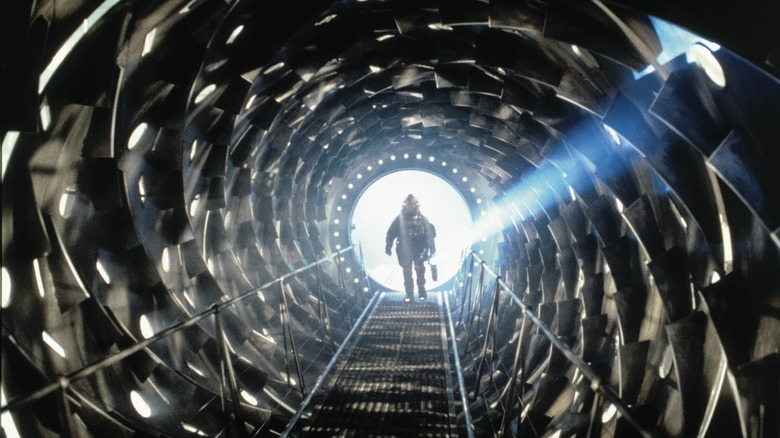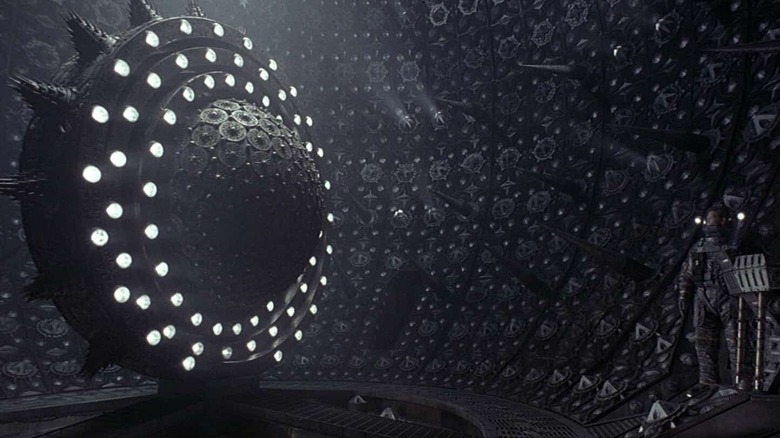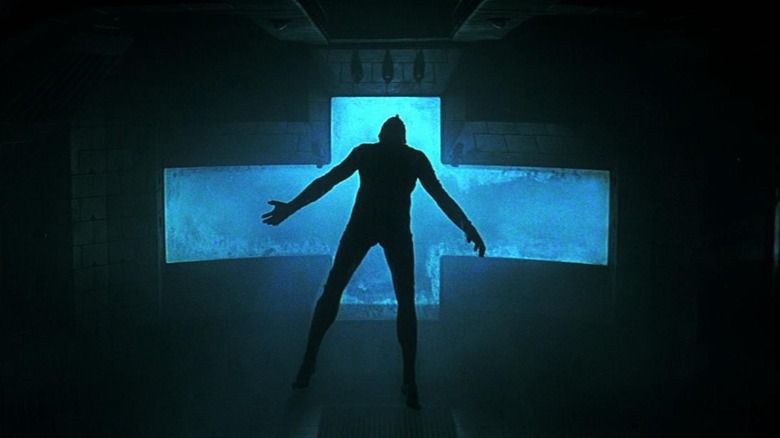How Titanic's Timing Nearly Sank Event Horizon
Paul W.S. Anderson knows a thing or two about summer blockbusters. The action and sci-fi director saw early success with his second film, 1995's "Mortal Kombat," which grossed more than $122 million worldwide. Despite given carte blanche on his third film, the 1997 sci-fi horror film "Event Horizon," another movie completely out of his control changed the trajectory of the entire project. Although Anderson would eventually follow with the immensely successful "Resident Evil" franchise, it was a danger lurking within the studio that nearly sank his early momentum.
When you think about the summer blockbuster season, it likely evokes memories of going to the theater with friends and family, the smell of popcorn, and the anticipation of being wowed by the on-screen spectacle and special effects. What you probably don't think of is studio schedules, post-production timelines, and test audiences. But because of the mammoth production of James Cameron's "Titanic," these are the things that almost swallowed up "Event Horizon" like a black hole.
Creating 'The Shining' in space
After the success of "Mortal Kombat," Anderson selected an ambitious project, the Gothic-inspired sci-fi/horror film "Event Horizon." When a research spacecraft dubbed Event Horizon re-appears above Neptune after missing for seven years, a rescue craft investigates only to find the ship terrorized by a hellish entity that appeared through a mysterious rip in the fabric of space. The film is often referred to as "The Shining" in space.
According to American Cinematographer, Anderson relied on cinematographer Adrian Biddle and effects supervisor Richard Yuricich to make the most of the $70 million budget. It was the perfect project for Biddle, who was the director of photography on "Aliens." The film relied heavily on practical effects and drew inspiration from Gothic elements for set design. Anderson used the work of medieval painters such as Hieronymus Bosch as inspiration in creating the unsettling lanscape of the film, and the Event Horizon's thrusters are meant to resemble the Notre Dame Cathedral towers.
Production on "Event Horizon" was a major undertaking. The set was mostly comprised of the Event Horizon spacecraft and took up seven soundstages. The designs were complex and included an elliptical-shaped corridor and a circular room with spikes coming out of the walls. Elaborate lighting grids included lasers, dimmers, and light sources behind the walls to create a sense of claustrophobia. The entity on the ship preyed on its inhabitants worst fears, leading to some very graphic scenes including a character tearing out his eyeballs. The unsettling tone of the film permeates every frame.
Despite the enormous production challenges, the film about hell in space faced an entirely different crisis. It was an iceberg from 85 years prior that threatened to sink the entire production.
Post-production was cut by more than half
According to The Ringer, the production of "Event Horizon" went off without a hitch. Instead, a ship by another name began to wreak havoc with the project. Paramount Pictures co-financed James Cameron's "Titanic" and when Cameron pushed the film's summer 1997 release date back, Paramount was left with a Titanic-sized hole in its summer release schedule.
Paramount turned to Anderson, giving him just four weeks for post-production on "Event Horizon" instead of the scheduled 10 weeks. Now facing their own hell, Anderson's team worked feverishly to cut the film, finish the effects, and screen test the film. The rushed product showed, as the movie did not test well with early audiences. Not surprisingly, the film debuted to poor critical response and was a financial flop, grossing just $26 million. Anderson said of the rushed timetable:
"I think we never fully recovered in the postproduction process from that initial bad test. I think when we trimmed it, we made some good decisions but we made some bad decisions as well."
In some respects, "Titanic" did swallow up "Event Horizon." Despite developing a cult following, plans for a director's cut of "Event Horizon" are all but impossible. In a story that could only come from Hollywood, the film's additional footage is unusable because, according to Den of Geek, it was stored in a Transylvania Salt Mine. Anderson has also said that any new version of the film would have to involve something newly constructed. Perhaps if the film had a proper post-production timeline, it would have been met with greater critical and commercial success, prompting the studio to preserve the footage. This would have allowed Anderson to revisit the project and give audiences a proper director's cut of the film. Instead, the film will continue as it remains, like a sunken artifact on the ocean floor.


